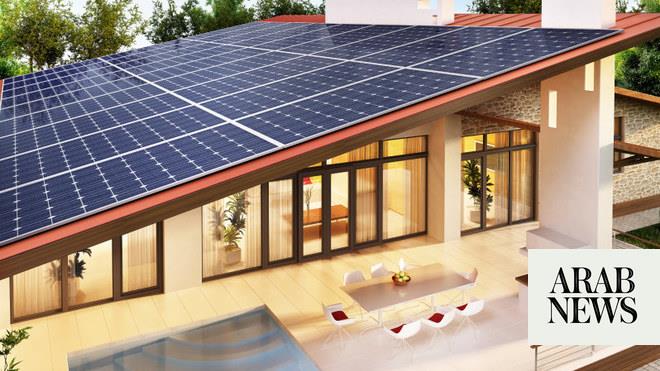
US researchers have developed a new technique that can significantly increase the efficiency of solar cells. In this method, a photon kicks out two electrons instead of one, to generate power.
Researchers led by Markus Einzinger and Marc Baldo from the Massachusetts Institute of Technology (MIT) in Cambridge, have published their study in the Nature journal.
While the blue and green light beams have shorter waves than others, their photons contain more energy, which, according to the researchers, can be sufficient to kick out two photons into silicone. This high energy is usually wasted in the form of thermal radiation.
In fact, in 1979, the US physicist David Dexter found that this method could be used. If the upper layer of the solar cells is made of hydrocarbon tetracene, the high-energy photon can generate two excitons instead of one.
According to the German News Agency, excitons are bundles of energy that can move like electrons through the silicone.
The challenge was to transfer these two excitons produced by a photon, from the tetracene to the silicon, so that two electrons are set in motion there. But, the result of previous attempts was a constant loss of power on the silicon surface.
This loss can be largely prevented by using an extremely thin intermediate layer of hafnium oxynitride (only 0.8 nanometers thick), that help transfer the exitons from the tetracene into the silicon. According to Baldo, this hafnium oxynitride layer is crucial to save the wasted energy. "Thats why other researchers were not able to complete this process, and thats why we managed to," he explained in a MIT statement.
The researchers see the efficiency of the solar cells can be increased, from 29.1 percent to around 35 percent, when converting sunlight into power with the new method.
Joseph Luther and Justin Johnson of the National Renewable Energy Laboratory (NREL), in Golden, Colorado, said this step is "an exciting boost for solar cells."
Although the US experts said that the new technique is still many years away from commercial use, they stressed it has an advantage over other efficiency increase attempts: "This strategy requires no additional electrical contacts or changes in the operation of the solar cell."
For his part, Christoph Goldschmidt said the idea is still very far from commercial use, and "the efficiency of the solar cell produced by the researchers is only 5.1 percent despite the stimulation of two electrons. Commercially available solar cells, however, would already be up to 24 percent."
Goldschmidt adds that sometimes, it is not the technique that causes solar cells to produce less power. In a study published in the journal Nature Energy, Bart Sweerts of the ETH Zürich and his colleagues found that China could produce more solar power if air pollution was lower.
In their study, Sweerts and his team analyzed sunlight data from 119 monitoring stations across China. According to the analysis, the potential of solar power generation in China had decreased by 13 percent from 1960 to 2015 because of air pollution.
China is the world leader in solar power generation, accounting for more than half of the electricity generated by new solar installations deployed in 2018. At the same time, China has the highest CO2 emissions worldwide.












